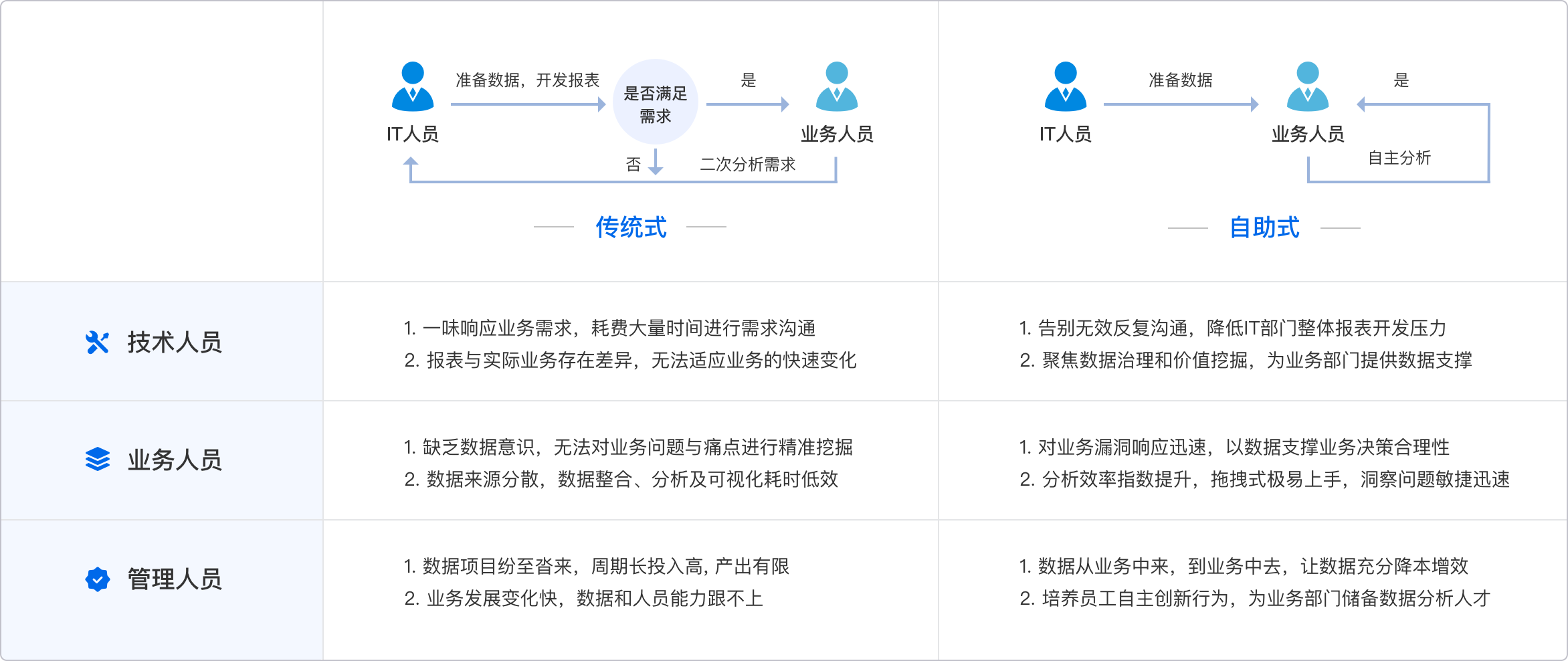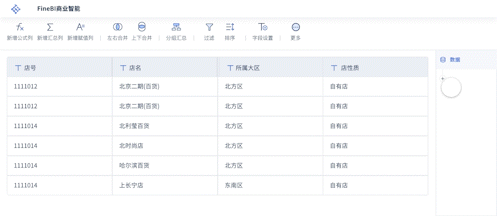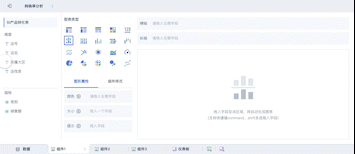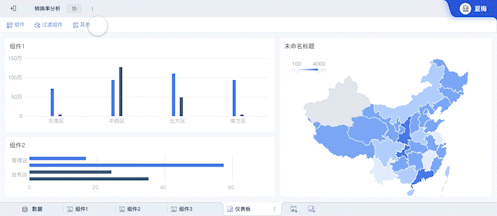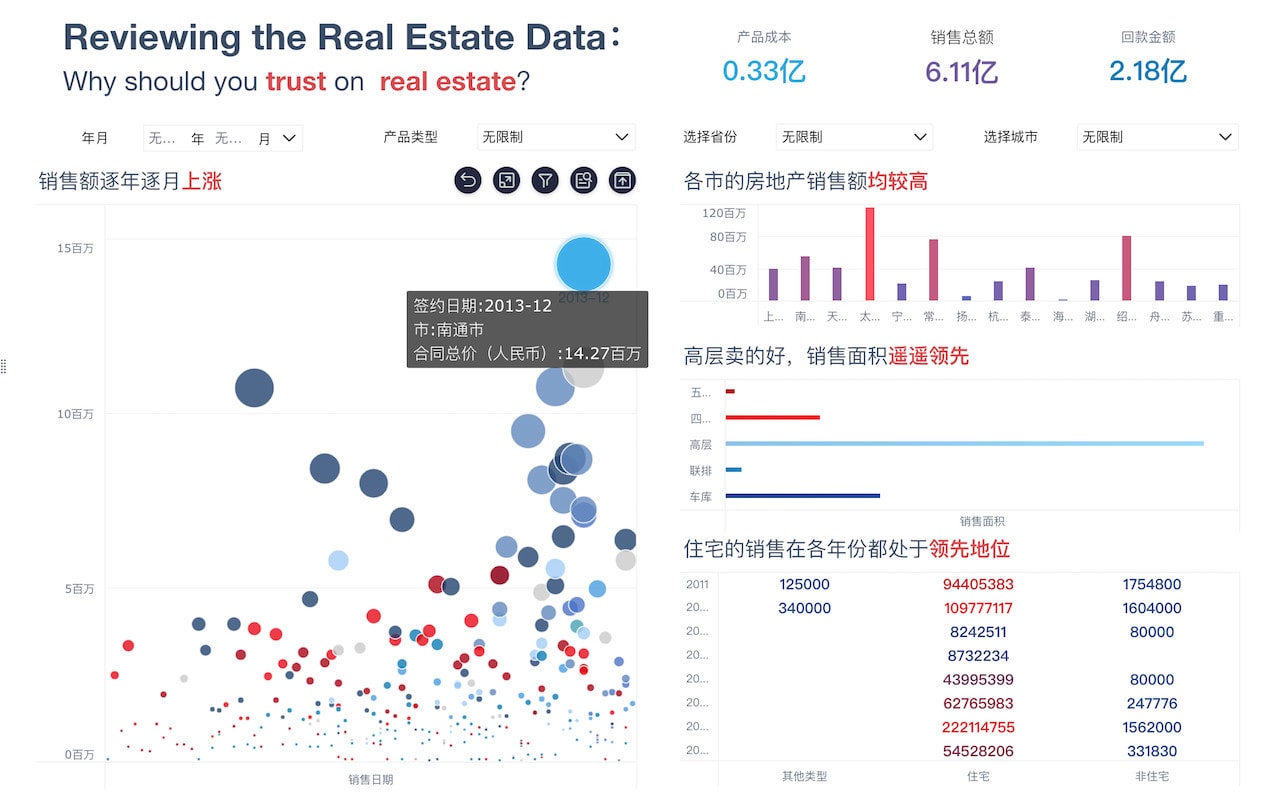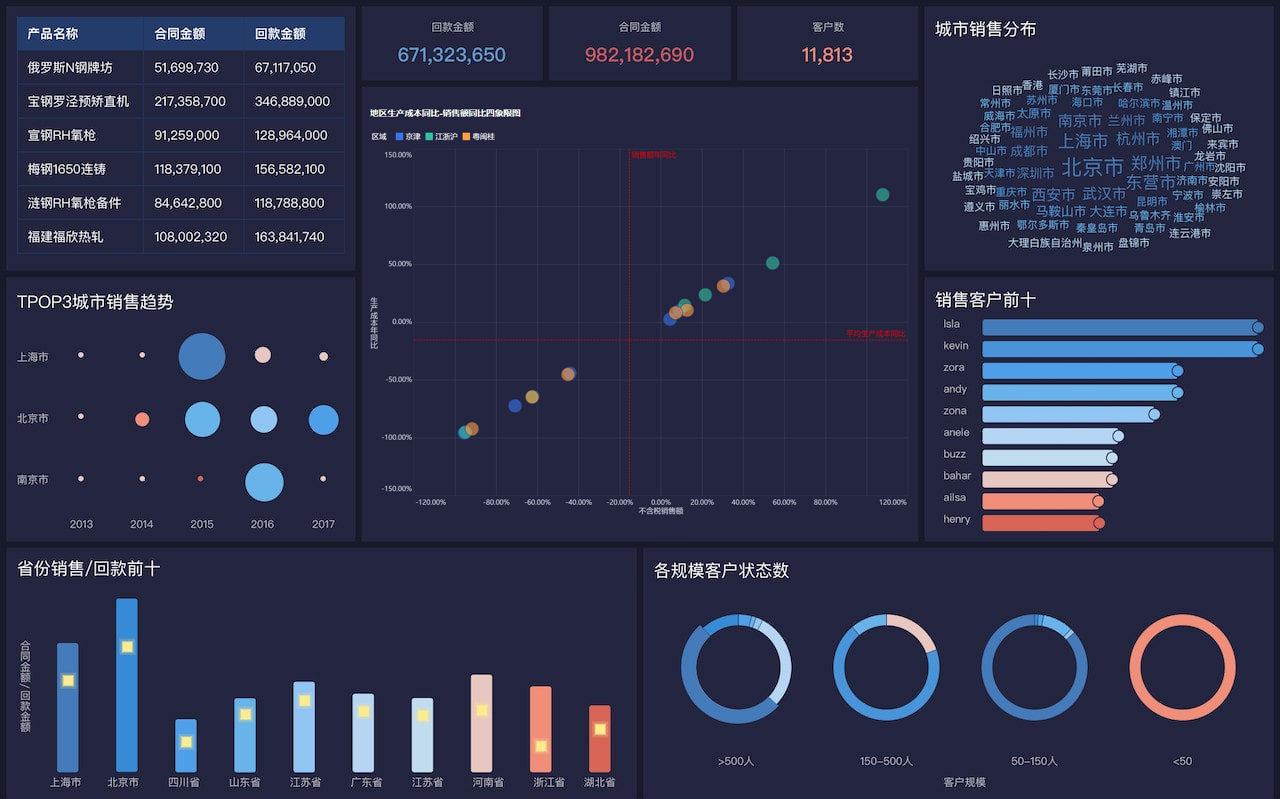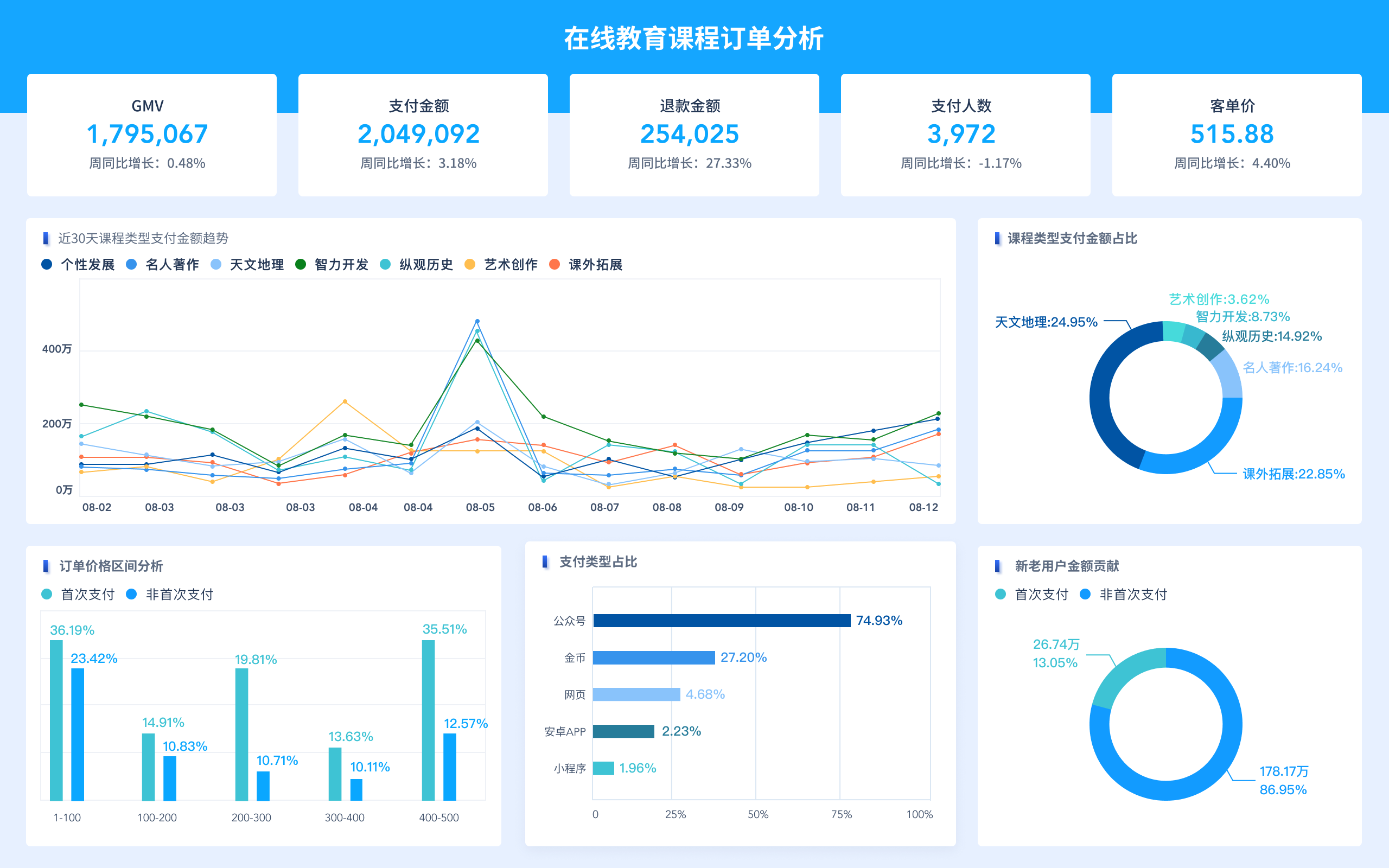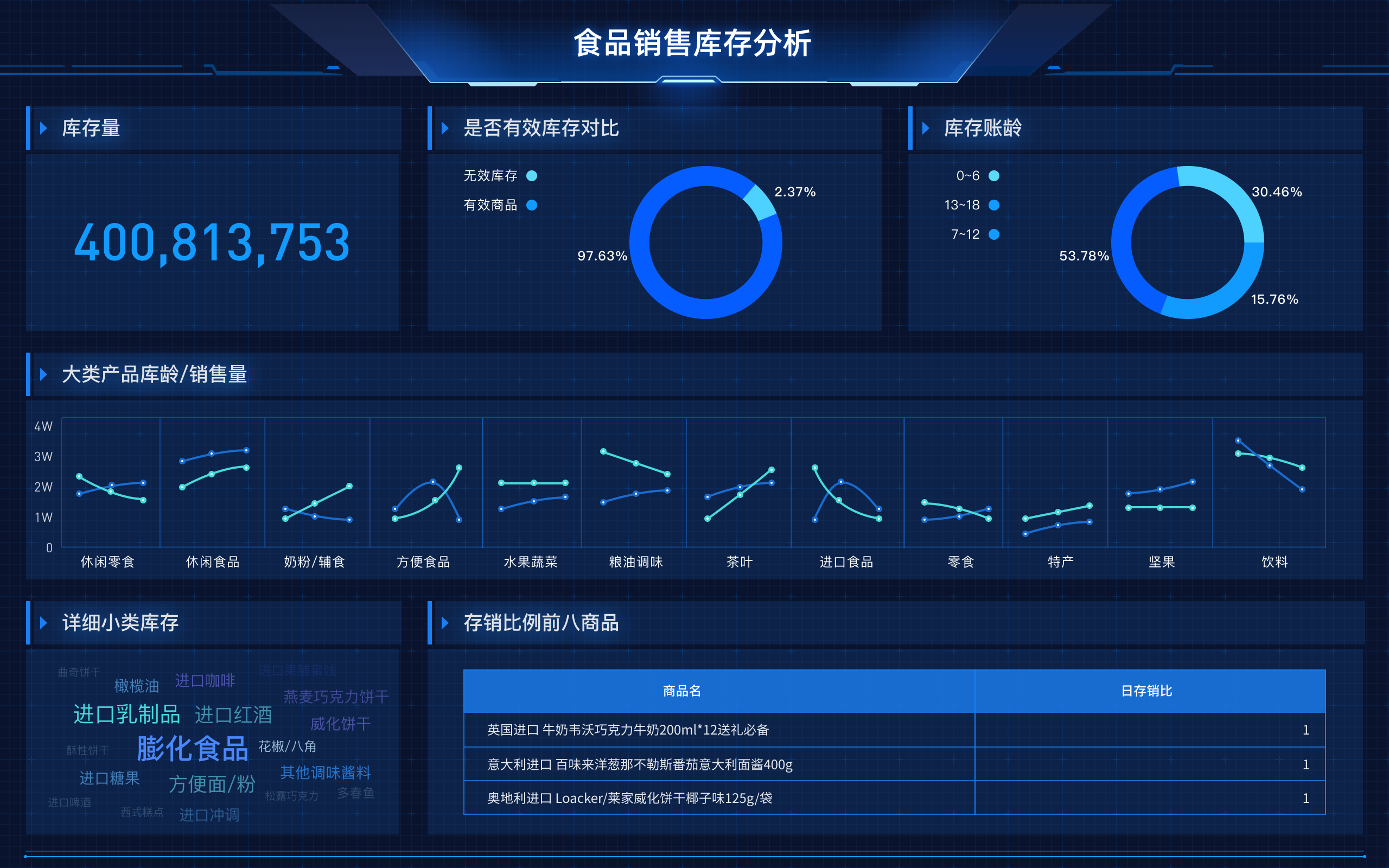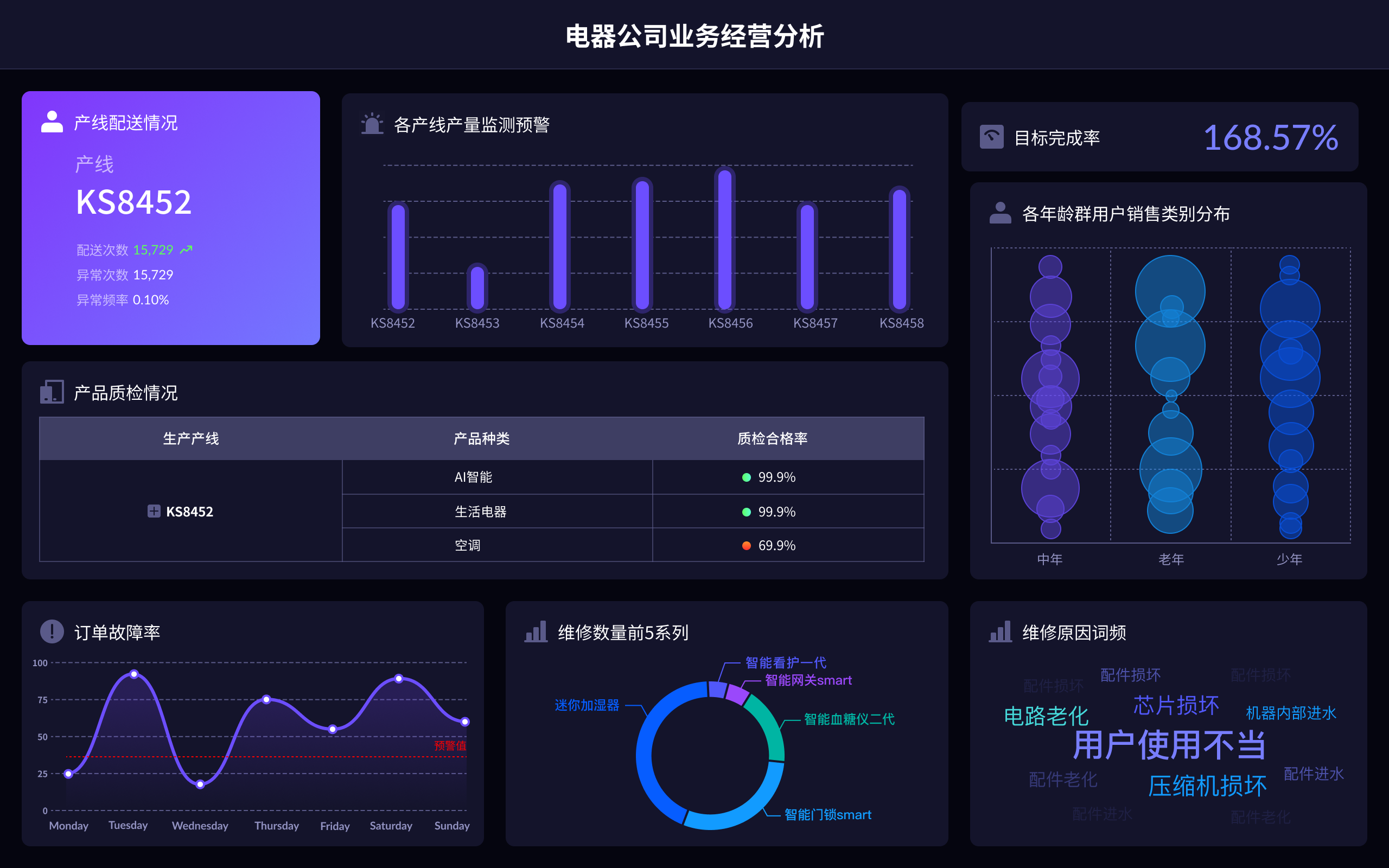
数据集成 (Data Integration) 的意思是:将来自不同来源的数据组合起来、统一数据视图、增强数据一致性。数据集成是将来自各种异构数据源的信息汇集在一起,以提供一个完整、一致的视图,从而帮助企业在决策过程中更加高效和准确。具体来说,这意味着从多个数据库、数据仓库、应用程序等提取数据,通过数据清洗和转换,消除重复和不一致,最终将这些数据整合到一个单一的数据存储中,方便查询和分析。这种技术广泛应用于商业智能、数据仓库、云计算等领域,可以大大提高数据的利用效率和质量。
一、数据集成的定义、重要性
数据集成是指将来自不同来源的数据通过技术手段进行汇集、转换和统一,形成一个一致的视图。重要性在于它能帮助企业和组织获得全面、准确的数据视图,从而支持更好的决策和分析。数据集成不仅提高了数据的可访问性和可用性,还减少了数据冗余和不一致性问题。例如,某大型零售公司可能拥有来自在线商店、实体店、供应链管理系统等多个数据源,通过数据集成技术,可以将这些数据汇总到一个统一的系统中,从而全面了解销售情况、库存水平和客户行为。
二、数据集成的主要方法、技术
ETL (Extract, Transform, Load) 是数据集成中最常用的方法之一。首先从多个数据源中提取数据,进行清洗、转换,最后加载到目标数据存储中。数据虚拟化 是另一种方法,通过创建一个虚拟的数据层,使用户可以访问和查询数据,而无需了解其物理位置。数据湖 是一种更为现代的数据集成方法,允许存储大量结构化和非结构化数据,并通过各种工具进行分析。技术上,常用的包括 Apache Kafka 用于实时数据流处理,Apache Nifi 用于数据流自动化,以及 FineDatalink,这是一款来自帆软的产品,专注于数据整合和管理。
三、数据集成的挑战、解决方案
数据集成面临的主要挑战包括数据源多样性、数据质量问题、数据隐私和安全性。解决这些问题的方法有 数据标准化,确保所有数据遵循统一的格式和标准;数据清洗,通过自动化工具和手工校验来提高数据质量;数据加密 和 访问控制,保护敏感数据的安全。此外,借助 FineDatalink 这样的工具,可以显著简化数据集成过程,通过其强大的数据处理能力和用户友好的界面,使数据管理更加高效。
四、数据集成的应用场景、案例
商业智能 和 数据分析 是数据集成的主要应用场景之一。例如,一家金融机构通过整合客户交易数据、市场数据和社交媒体数据,来分析客户行为,优化产品推荐。云计算 环境下的数据集成,如在 AWS 或 Azure 上,允许企业利用云平台的计算和存储能力,进行大规模数据整合和分析。物联网 (IoT) 领域,通过集成来自不同传感器的数据,企业可以实现实时监控和预测性维护。案例上,某制造业企业通过集成生产线数据、设备传感器数据和物流数据,实现了智能制造和供应链优化。
五、未来趋势、技术发展
随着技术的发展,人工智能 和 机器学习 正逐步融入数据集成领域,自动化数据清洗、异常检测和模式识别将变得更加普遍。边缘计算 的兴起,使得数据处理可以在数据生成源头附近进行,减少了延迟并提高了实时性。区块链技术 也在数据集成领域开始展现潜力,通过去中心化的方式确保数据的完整性和安全性。未来,随着数据量的持续增长和数据源的不断多样化,数据集成技术将更加智能化和自动化,提供更加精准和实时的数据支持。更多信息可以访问 FineDatalink官网。
相关问答FAQs:
1. What is Data Integration?
Data integration involves combining data from different sources to provide a unified view. This process is essential for businesses that need to consolidate data from various departments, databases, or systems to gain a comprehensive understanding of their operations. By integrating data, organizations can ensure that information is consistent, accurate, and accessible across the board. This integration might involve merging datasets, transforming data formats, and ensuring compatibility between different systems.
Data integration can be achieved through various methods such as ETL (Extract, Transform, Load) processes, data warehousing, or real-time data streaming. The choice of method depends on the specific needs of the organization, including the volume of data, the frequency of updates, and the types of data sources involved. Effective data integration helps in improving decision-making, operational efficiency, and overall business performance.
2. How Does Data Integration Benefit Businesses?
Businesses benefit from data integration in several ways. One of the primary advantages is enhanced data accuracy. By consolidating data from multiple sources, companies can eliminate discrepancies and ensure that all departments are working with the same information. This consistency is crucial for generating reliable reports and making informed decisions.
Another benefit is increased operational efficiency. Integrated data systems streamline workflows by automating data transfer and reducing manual data entry. This not only saves time but also reduces the risk of errors that can occur with manual processes. Additionally, data integration supports better customer experiences by providing a comprehensive view of customer interactions, preferences, and history, enabling more personalized and effective engagement.
Moreover, data integration can lead to significant cost savings. By centralizing data, companies can reduce the need for redundant data storage and management systems, leading to lower infrastructure costs. It also helps in identifying trends and insights that can drive strategic initiatives and improve competitive advantage.
3. What Are the Challenges of Data Integration?
While data integration offers numerous benefits, it also comes with its challenges. One significant challenge is dealing with data quality issues. Data from different sources may have inconsistencies, inaccuracies, or outdated information, which can complicate the integration process. Ensuring data quality requires thorough validation and cleansing processes.
Another challenge is handling data from disparate systems. Different systems may use various formats, standards, and protocols, making it difficult to merge data seamlessly. Organizations need robust tools and methodologies to address these compatibility issues and ensure smooth integration.
Scalability is also a concern. As organizations grow and their data needs evolve, the integration system must be able to scale accordingly. This often involves updating or replacing existing systems, which can be resource-intensive.
Lastly, security and privacy are critical issues. Integrating data from multiple sources can expose sensitive information to potential breaches. Implementing strong security measures and compliance with data protection regulations are essential to safeguard integrated data and maintain trust with stakeholders.
本文内容通过AI工具匹配关键字智能整合而成,仅供参考,帆软不对内容的真实、准确或完整作任何形式的承诺。具体产品功能请以帆软官方帮助文档为准,或联系您的对接销售进行咨询。如有其他问题,您可以通过联系blog@fanruan.com进行反馈,帆软收到您的反馈后将及时答复和处理。


